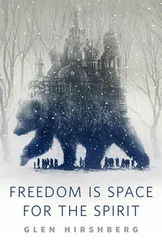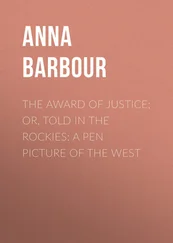The Noakhali outbursts were isolated sparks but the passions which had ignited them could easily become a firestorm to set the whole sub-continent ablaze. Those horrors, the outbursts which had preceded them in Calcutta and those which had followed to the north-west in Bihar where, with equal brutality, a Hindu majority had turned on a Moslem minority, explained the anxiety in Attlee’s conversation with the man he urgently wanted to dispatch to New Delhi as Viceroy.
They also explained Gandhi’s presence in Srirampur. The fact that, as their hour of triumph approached, his countrymen should have turned on each other in communal frenzy, broke Gandhi’s heart. They had followed him on the road to independence, but they had not understood the great doctrine he had enunciated to get them there, non-violence. Gandhi had a profound belief in his non-violent creed. The holocaust the world had just lived, the spectre of nuclear destruction now threatening it, were to Gandhi the conclusive proof that only non-violence could save mankind. It was his desperate desire that a new India should show Asia and the world this way out of man’s dilemma. If his own people turned on the doctrines he’d lived by and used to lead them to freedom, what would remain of Gandhi’s hopes? It would be a tragedy that would turn independence into a worthless triumph.
Another tragedy, too, threatened Gandhi. To tear India apart on religious lines would be to fly in the face of everything for which Gandhi stood. Every fibre of his being cried out against the division of his beloved country demanded by India’s Moslem politicians, and which many of its English rulers were now ready to accept. India’s people and faiths were, for Gandhi, as inextricably interwoven as the intricate patterns of an oriental carpet.
‘You shall have to divide my body before you divide India,’ he had proclaimed again and again.
He had come to the devastated village of Srirampur in search of his own faith and to find a way to prevent the disease from engulfing all India. ‘I see no light through the impenetrable darkness,’ he had cried in anguish as the first communal killings had opened an abyss between India’s Hindu and Moslem communities. ‘Truth and non-violence to which I swear, and which have sustained me for fifty years, seem to fail to show the attributes I have ascribed to them.’
‘I have come here,’ he told his followers, ‘to discover a new technique and test the soundness of the doctrine which has sustained me and made my life worth living.’
For days, Gandhi wandered the village, talking to its inhabitants, meditating, waiting for the counsel of the ‘Inner Voice’ which had so often illuminated the way for him in times of crisis. Recently, his acolytes had noticed he was spending more and more time on a curious occupation: practising crossing the slippery, rickety, log bridges surrounding the village.
That day, when he had finished with his mudpack, he called his followers to his hut. His ‘Inner Voice’ had spoken at last. As once ancient Hindu holy men had crossed their continent in barefoot pilgrimage to its sacred shrines, so he was going to set out on a Pilgrimage of Penance to the hate-wasted villages of Noakhali. In the next seven weeks, walking barefoot as a sign of his penitence, he would cover 116 miles, visiting 47 of Noakhali’s villages.
He, a Hindu, would go among those enraged Moslems, moving from village to village, from hut to hut, seeking to restore with the poultice of his presence Noakhali’s shattered peace.
Because this was a pilgrimage of penance, he decreed he wanted no other companion but God. Only four of his followers would accompany him. They would live on whatever charity the inhabitants of the villages they visited were ready to offer them. Let the politicians of his Congress Party and the Moslem League wrangle over India’s future in their endless Delhi debates, he said. It was, as it always had been, in India’s villages that the answers to her problems would have to be found. ‘This,’ he said, ‘would be his “last and greatest experiment.” If he could “rekindle the lamp of neighbourliness”, in those villages cursed by blood and bitterness, their example might inspire the whole nation.’ Here in Noakhali, he prayed, he could set alight again the torch of non-violence and conjure away the spectre of communal warfare which was haunting India.
His party set out at dawn. Gandhi’s pretty nineteen-year-old great-niece Manu had put together his spartan kit: a pen and paper, a needle and thread, an earthen bowl and a wooden spoon, his spinning-wheel and his three gurus, a little ivory representation of the three monkeys who ‘hear no evil, see no evil, speak no evil’. She also packed in a sack the books that reflected the eclecticism of the man marching into the jungle: the Bhagavad-Gîtâ , a Koran, the Practice and Precepts of Jesus , and a book of Jewish thoughts.
With Gandhi at their head, the little band marched over the dirt paths, past the ponds and groves of betel and coconut palms to the rice paddies beyond. The villagers of Srirampur rushed for a last glimpse of this bent 77-year-old man striding off with his bamboo stave in search of a lost dream.
As Gandhi’s party began to move out of sight across the harvested paddies, the villagers heard him singing one of Rabindranath Tagore’s great poems set to music. It was one of the old leader’s favourites, and as he disappeared they followed the sound of his high-pitched, uneven voice drifting back across the paddies.
‘If they answer not your call,’ he sang, ‘walk alone, walk alone.’
The fraternal bloodshed Gandhi hoped to check had for centuries rivalled hunger as India’s sternest curse. The great epic poem of Hinduism, the Mahabharata , celebrated an appalling civil slaughter on the plains of Kurukshetra, north-west of Delhi, 2500 years before Christ. Hinduism itself had been brought to India by the Indo-European hordes descending from the north to wrest the sub-continent from its semi-aboriginal Dravidian inhabitants. Its sages had written their sacred vedas on the banks of the Indus centuries before Christ’s birth.
The faith of the Prophet had come much later, after the cohorts of Genghis Khan and Tamerlane had battered their way down the Khyber Pass to weaken the Hindu hold on the great Gangetic plain. For two centuries, the Moslem Moghul emperors had imposed their sumptuous and implacable rule over most of India, spreading in the wake of their legions the message of Allah, the One, the Merciful.
The two great faiths thus planted on the sub-continent were as different as could be found among the manifestations of man’s eternal vocation to believe. Where Islam reposed on a man, the Prophet, and a precise text, the Koran, Hinduism was a religion without a founder, a revealed truth, a dogma, a structured liturgy or a churchly establishment. For Islam, the Creator stood apart from his creation, ordering and presiding over his work. To the Hindu, the Creator and his creation were one and indivisible, and God a kind of all pervading cosmic spirit to whose manifestations there would be no limit.
The Hindu, as a result, worshipped God in almost any form he chose: in animals, ancestors, sages, spirits, natural forces, divine incarnations, the Absolute. He could find God manifested in snakes, phalli, water, fire, the planets and the stars.
To the Moslem, on the contrary, there was but one God, Allah, and the Koran forbade the Faithful to represent him in any shape or form. Idols and idolatry to the Moslem were abhorrent; paintings and statues blasphemous. A mosque was a spare, solemn place in which the only decorations permitted were abstract designs and the repeated representations of the 99 names of God.
Idolatry was Hinduism’s natural form of expression and a Hindu temple was the exact opposite of a mosque. It was a kind of spiritual shopping centre, a clutter of Goddesses with snakes coiling from their heads, six-armed Gods with fiery tongues, elephants with wings talking to the clouds, jovial little monkeys, dancing maidens and squat phallic symbols.
Читать дальше












